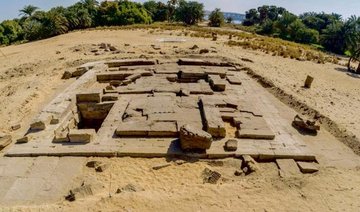RIYADH: Following a successful preview tour at Cannes, Art Dubai, Tribeca Film Festival and others, Reframe Saudi will be shown in its entirety for the first time at the World VR Forum (WVRF).
Presented by the MiSK Art Institute, the virtual reality (VR) documentary Reframe Saudi has been chosen as an official selection of the WVRF, which is currently in its third year.
The experience is set to illustrate the continuing story of change in Saudi Arabia and will take place in a dedicated booth where it will be one of 13 films selected to take part in the competition.
MiSK Art Institute, a new artist-centered cultural organization operating under the auspices of the Crown Prince Mohammed bin Salman’s MiSK Foundation, will launch the world premiere of the Reframe Saudi VR film, produced by CULTURUNNERS, together with a panel discussion on June 8th.
Directed by Italian filmmaker Matteo Lonardi, Reframe Saudi explores Saudi Arabia from the perspective of a new generation of contemporary artists. As the country enters a new phase socially and economically, the film transports viewers to the studios of artists between Jeddah, Abha and Riyadh. Each of them, through their work, reflects on a different aspect of this transformative historical time.
The panel conversation on June 8 will examine how VR can explore an artist’s practice in unprecedented ways, as seen in the film. Director Matteo Lonardi discusses with journalist Marisa Mazria Katz how he has used documentary VR to tell the story of artists around the world, and why the medium is set to unlock a whole new way to experience art.
Ahmed Mater, Director of the Misk Art Institute, said: “We are thrilled to present the film Reframe Saudi, in the World VR Forum. Collectively, the documentary and discussions around new communications technologies illustrate how art and the creative industries are an integral part of the change that is transforming Saudi Arabia.”
Mater added: “The Misk Art Institute, like the Misk Foundation more generally, works to empower the young Saudi population to unleash its talent. We do this at home, but vitally, by encouraging international cultural exchange and diplomacy, also abroad. It is essential at this time that Saudi artists engage with audiences around the world to help to tell the continuing story of change in Saudi Arabia.”
Reframe Saudi documentary chosen as official selection at 2018 World VR Forum
Reframe Saudi documentary chosen as official selection at 2018 World VR Forum

- Presented by the MiSK Art Institute, the virtual reality (VR) documentary Reframe Saudi has been chosen as an official selection of the WVRF
- Directed by Italian filmmaker Matteo Lonardi, Reframe Saudi explores Saudi Arabia from the perspective of a new generation of contemporary artists
Maja-Ajmia Zellama tackles cultural identity and grief in ‘Têtes Brûlées’

- The Belgian-Tunisian director discusses her Saudi-backed debut feature
RIYADH: Belgian-Tunisian-Danish filmmaker Maja-Ajmia Zellama’s debut feature “Têtes Brûlées” (‘Hotheads’) received two special mentions at last month’s Berlin International Film Festival.
The film, which was backed by Saudi Arabia’s Red Sea Fund, has been praised for its depiction of a universal story through a singular lens. Zellama wrote and directed the movie, which follows the story of Eya (played by Safa Gharbaoui), a 12-year-old girl growing up in a Tunisian-Muslim family in Brussels, whose life revolves around her beloved 25-year-old brother Younès and his friends. Following Younès’ sudden and unexpected death, Zellama takes viewers through the culture, customs, resilience, and solidarity of this tight-knit community through the family’s mourning period.

“I didn’t expect so many compliments about the film from people who are not Muslims or not from immigrant backgrounds,” Zellama told Arab News. “I spoke a lot with a teenager from Germany, and I understood at that moment how grief is so universal. There are other people who say, ‘Oh yes, I’m learning a new thing about a new culture and new religions.’”
Zellama also expressed her appreciation for the Red Sea Fund’s support of a “multicultural” story. “For me, it was a major recognition to have this help and support from a Muslim country. It helped me to make this kind of film, and I’m also very curious about working more with Middle Eastern countries,” she said.
The film tackles aspects of identity, the Arab diaspora, collective grieving, religion, cultural customs, and commentary on street crimes. Largely set in the family house, constantly filled with people after Younès’ tragic death, one of the director’s goals was to show the contrasting comfort and simplicity of immigrants’ family lives compared to their lives outside of their homes.
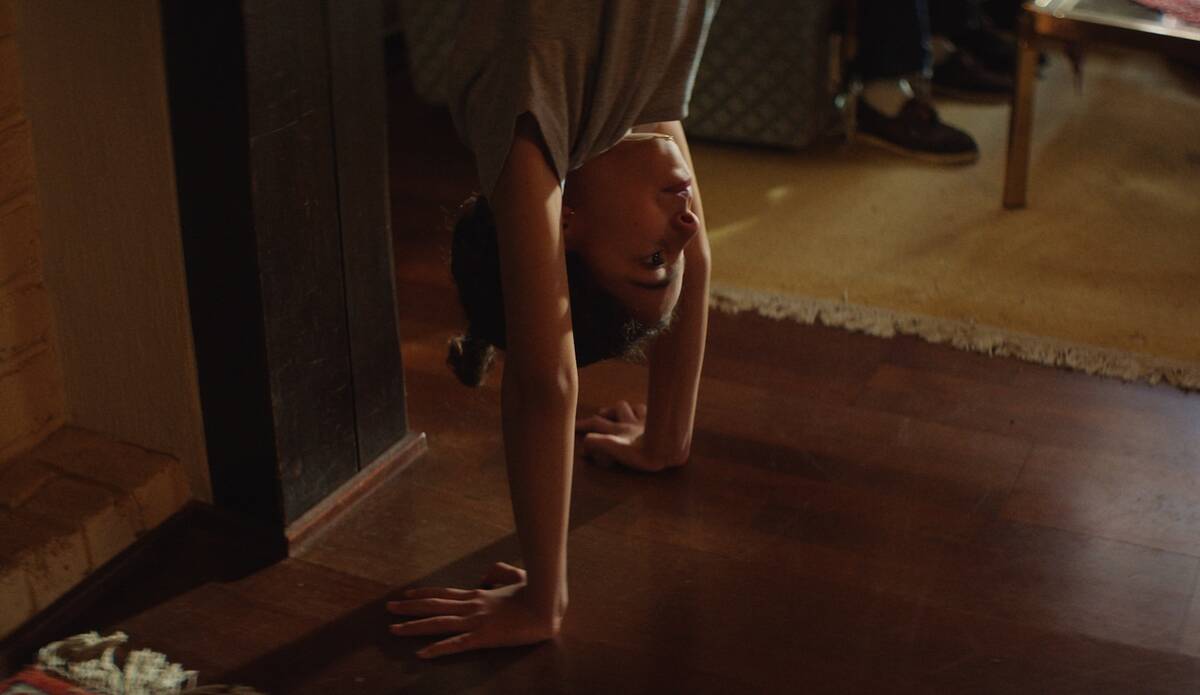
“For me, the most complicated part of identity and immigration is systemic racism,” Zellama said. “It’s oppression in the society. But in the home, it’s not always so complicated. There are nuances; it’s complex, but in a positive way.”
Zellama’s own life was a major inspiration for the film. Her father is Tunisian and her mother Danish. She was born and raised in Belgium around a large Tunisian community. Her household was home to two religions and three languages. “The question of identity has been present all my life, of course, as a mixed kid, but also as a person of the diaspora,” she explained.
And Zellama’s experience of losing a much-loved family member was central to the narrative. “When I was grieving with my family, it was the most difficult time in my life. But it was also one of the moments in my life when I felt the most love and solidarity, because we were surrounded by so many people who were (making us) dinner, going to the grocery, giving money,” she said. “So, for me, yes, there is the grief that we had in our family, but also — and most of all — the love.”
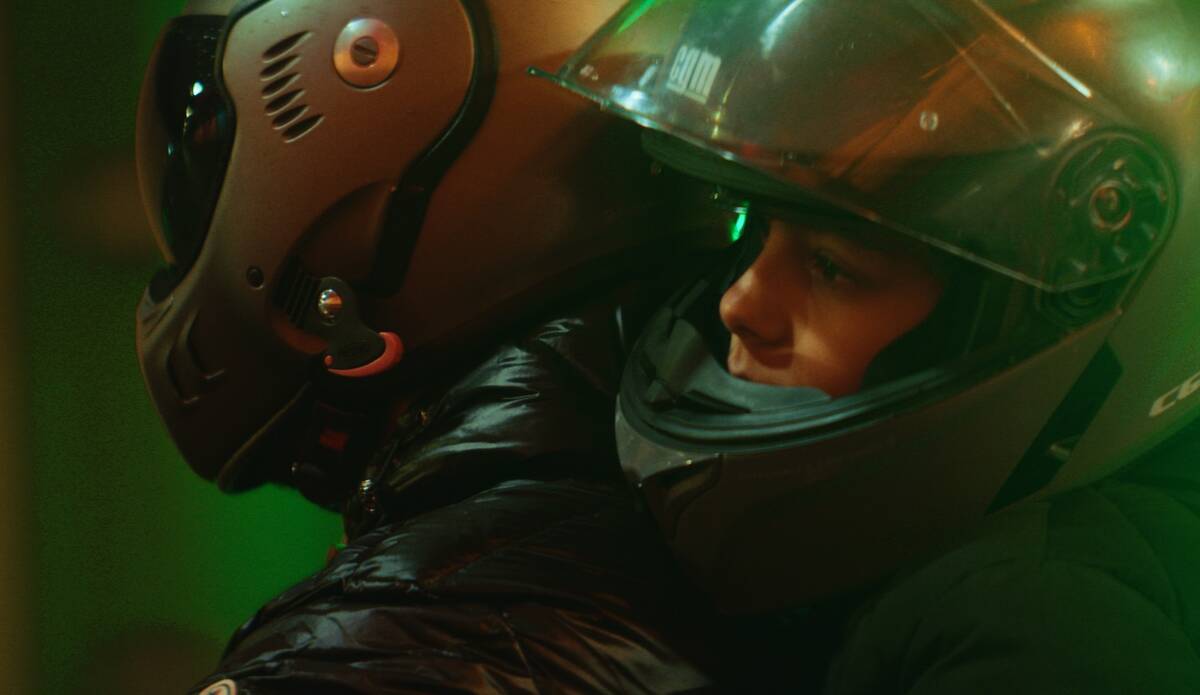
The film explores spirituality in a nuanced and open way, particularly in its funeral and burial scenes, inspired by Zellama’s own journey with faith. She was keen to have Eya find a kind of forbearance through religion while also providing representation and an alternate, more complex, portrayal of Islam in countries outside the Middle East.
“Muslims are very different, and each person practices religion in a different way,” Zellama said. “She finds this way, and she’s good with it.”
And the film has proven to cross cultural and religious boundaries, with viewers from other faiths and backgrounds connecting to its central themes.
“Just to hear the Qur’an, (even if) you don’t understand it, you can feel something,” she said. “You don’t know what it is, but you can feel something. When you see her praying, you can imagine. And, for me, that’s enough.”
The character of Eya is key to the film’s success: she’s mature, but also playful; she’s creative, clever, defiant, and works to break stereotypes throughout the film. One of the most affecting, and effective, scenes is when she breaks away from the group of mourning women to help bury her brother alongside the men.
“I wanted to have a character who grows up in a lovely family who give space for this young girl to be what she wants,” Zellama said. “She doesn’t (think to) herself, ‘Oh, this is a boy thing or a girl thing.’ No, she’s doing what she wants to do at this moment.
“She’s very impulsive, and the impulsivity was also an important thing in the character of Eya,” she continued. “She looks like so many Muslim women and children I see around me. So, this was not me making a ‘statement.’ It was more me thinking that there are so many strong little girls around me, and I wanted to have a character like that.”
Meshal Al-Jaser talks AlUla, tasheer, and ‘Gunpowder’

- The Saudi filmmaker’s viral music video explores otherworldly landscapes and traditional dance
ALULA: For the video of the latest track from his electronic music project Arabian Alien, Saudi filmmaker Meshal Al-Jaser headed to the heart of AlUla’s dramatic desert landscape. “Gunpowder” blends striking visuals with Al-Jaser’s signature surrealist touch.
The track, created with his bandmate Mohammed Alhamdan, explores themes of heartbreak and disillusion, using the raw beauty of AlUla to amplify its message.
“It’s about tragedy,” Al-Jaser tells Arab News. “It’s about someone who’s trying to cope with getting his heart broken.”
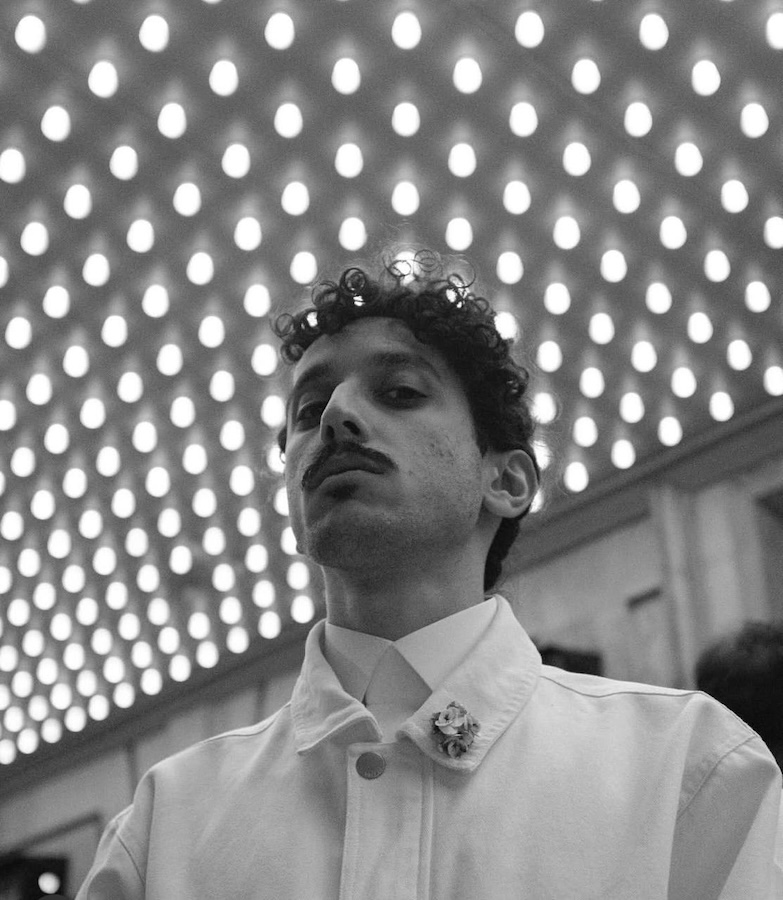
The video has racked up more than 1.7 million YouTube views in the first month of its release, thanks to its arresting visuals, especially of the Hejazi war dance, tasheer, which involves firing rifles into the ground as the wielder jumps into the air, sending a dramatic display of fire and gunpowder under their feet.
“I was always fascinated by tasheer, in terms of visuals,” says Al-Jaser. “A lot of the tribes in Hejaz practice it. And, like many other Saudi dances, it really originates from trying to intimidate the enemy. With time, it became more of a celebratory dance that they do at weddings and such.
“For years, I really wanted to capture it the right way, because it requires a lot of elements to come together,” he continues. “What’s specifically fascinating about it for me is really the precision and the skills of the people that do it. You have to jump at the right time, point in the right direction, shoot at the right time and land at the right time. It’s not a simple dance. It requires a lot of skill.”

“Gunpowder,” is an extension of Al-Jaser’s mission to capture the true essence of Saudi culture. “I don’t want to change anything in it or bend it around, as much as I just want to capture it in the way I view it,” he says.
Shooting against the towering sandstone cliffs and vast desert landscape of AlUla was also a treat. “I was really mindblown. It’s one of the most unique locations in the world. It’s very diverse. Every piece of it feels like a whole different world. So, when (Film AlUla) approached me (to shoot a video there), I already knew it was going to look good because of the environment,” Al-Jaser says. “One of the biggest challenges was that we only had two days to shoot it. We were just running around to really try to capture all the essence of the place, because it’s so different.”
From viral YouTube sketches to acclaimed short films, Al-Jaser’s work has challenged cultural taboos and reimagined Saudi identity through a satirical lens. His storytelling often explores the tension between tradition and modernity, mixing absurdity with sharp cultural commentary.

In 2023, Al-Jaser released his debut feature film, “Naga,” which boldly set out his signature style — provocative, surreal and unafraid to push cultural boundaries. The film, which premiered at the Toronto International Film Festival, is a thriller-horror hybrid set in a dystopian desert landscape. It follows a rebellious young woman named Sarah, who sneaks out to attend a secret party in defiance of her conservative father’s rules. But when she misses her curfew and tries to return home, her night takes a bizarre and terrifying turn.
“My ultimate dream was always to become a filmmaker and make feature films. So this was just a small step towards that,” Al-Jaser says. “It was very interesting. Anyone you know who has shot a feature film would tell you that it’s the hardest thing they’ve done, because, especially with the first film, you kind of want to do so much with so little, and it’s a whole different experience.
“I know it’s all directing and storytelling, but, really, the amount of effort it takes to make a feature film as opposed to a short film makes it feel like a whole different medium. So, my experience was very challenging, but at the same time, I also feel really privileged to have done my first feature with Netflix. It was nice for them to really believe in me. And for it to go to Toronto… I’m so thankful for that.”
Al-Jaser hopes to make his big-screen start as a filmmaker soon. “Hopefully I will make my cinematic debut, because ‘Naga’ was a streaming film,” he says. “I’ve never experienced my film in a cinema and that’s something I’m really looking forward to.
“I really am attempting to do the best I can. Of course, I feel the weight and the responsibility, since I’m one of the first generation of Saudi filmmakers, but I also feel the privilege of that,” he continues. “If I can stay focused — which is easier said than done — then hopefully everything will fall in the right place.”
REVIEW: ‘The Residence’ — gloriously silly and wonderfully fun

- Netflix’s latest Shondaland series is a brilliant whodunnit for the streaming generation
LONDON: There’s a common thread running through most of the year’s best TV so far — one that looks sure to continue through the upcoming shows expected to dominate the next awards season: they have tended to be high-brow, high-production affairs shows with Very Serious subject matter and Very Serious performances.
And they’ve been Very Good to watch, it’s true. But sometimes you need something that’s just a bit more… fun.
Step forward “The Residence,” the latest show in Netflix’s megadeal with Shonda Rhimes’ production company. This eight-part whodunnit is set in a fictionalized version of the White House and is a typically screwball murder mystery with an array of eccentric characters and a charismatic lead detective. But, more importantly, “The Residence” is wonderfully, absurdly, stupendously fun. In an era of serious TV, it’s a glorious palette cleanser, a rollicking, twist-riddled romp through the most famous house in history.
During a state dinner for the visiting Australian prime minister, the US president receives the shocking news that a murder has been committed on the grounds. With hundreds of guests (including the odd cameo from real-world figures) and staff in attendance, the whole house is locked down so that legendary detective Cordelia Cupp can swoop in and solve the crime.
The masterstroke here is casting Uzo Aduba (“Orange is the New Black”) as Cupp — a character as brilliantly deductive as she is hilariously deadpan. The writing is snappy and concise, sure, but it’s Aduba who brings it to life across a show that could have been, at eight episodes, a couple hours too long to sustain a sole mystery.
Thankfully, with comic chops as accomplished as these — and a supporting cast that includes excellent turns from Giancarlo Esposito, Jason Lee and others — there’s little sense of lag, even as audiences are treated to the umpteenth plot twist. And yes, all of the most obvious mystery tropes are shamelessly mined, and Cupp’s abrasively, frustratingly brilliantly detective feels like an homage to many of those who have come before (even Benoit Blanc gets a namecheck), but when a show is this much fun, you won’t care. Bingeworthy escapism at its finest.
Huge ancient tomb discovered in Egypt

- Site at Abydos, south of Cairo, largest find in over a decade
- Unknown king’s final resting place thought to be more than 3,600 years old
LONDON: Archaeologists in Egypt have discovered a tomb belonging to an unknown pharaoh around 300 miles south of Cairo.
The site, which is being worked on by Egyptian and American researchers, is the second such discovery to be made this year and is believed to be around 3,600 years old.
The tomb was uncovered 23 feet below Abydos, one of Egypt’s oldest known ancient settlements.
With 16-foot-high vaults and ornate decorations across several chambers, the find dwarfs a previous discovery of a tomb in the area from 2014, previously the largest on record, which belonged to a king called Seneb-Kay.
Josef W. Wegner, a curator at the Penn Museum in Philadelphia who is leading the American side of the dig, told the New York Times: “It’s a new chapter in investigating this dynasty.”
The tomb of the unknown king contains painted scenes from ancient Egyptian mythology, including images of the goddesses Isis and Nephthys.
Describing the find as “exciting,” Wegner said: “This tomb and Seneb-Kay’s tomb are the earliest surviving royal tombs that actually have painted decorations inside of them.”
However, the tomb has suffered significant damage over the millennia, and no identifiable human remains have been recovered.
It is thought that grave robbers also ransacked the site in the past, with little in the way of artefacts found in the tomb.
The damage caused by the break-ins has also left much of the decoration tarnished, including rendering portions of writing on the structure bearing the king’s name illegible.
Wegner said the identity of the tomb’s owner may be found in other inscriptions on monuments and buildings around ancient Abydos, with two kings named Senaiib and Paentjeni identified as potential candidates.
He added that work would continue to preserve the find, and to uncover other tombs that may shed more light on the broader period, and potentially the identity of the unknown king.
“It’s always our dream to find one that’s intact or partially intact,” he said. “There may yet be tombs like that.”
Prof. Anna-Latifa Mourad-Cizek, a University of Chicago archaeologist, told the NYT that the find is “highly significant” for understanding “a fascinating period when Egypt was controlled by competing powers.”
Wegner said the era was defined by “a phase of warrior pharaohs fighting it out,” adding that the skeleton of Seneb-Kay bore wounds that suggested he could have died in battle.
Though the region was fragmented at the time, Wegner said, the Abydos dynasty was not “a kind of flash in the pan where you’ve got a handful of kings breaking off from whatever original territory they belonged to.”
The dynasty laid the foundations for the later unification of the country in what would later become known as “the great empire of the New Kingdom,” he added.
Inside NEOM’s inaugural Artists in Residence program

- Eight artists, including four from Saudi Arabia, took part in the three-month residency
DUBAI: What does art have to do with the creation of a futuristic city in the middle of the desert? According to Michael Lynch, the head of the entertainment and culture sector at NEOM — Saudi Arabia’s $500 billion megaproject — it has a vital role to play.
“Building a region also requires artists to be working with us,” Lynch told Arab News. “We're talking about a future region within a forward-looking country. To make a community work, artists are an integral part of it, and to make a region work, artists in their various forms and with the various things that they want to work on are incredibly important to building the quality of life and the quality of experience for people.”

As proof of NEOM’s focus on art and culture, it kicked off its inaugural three-month long Artist-in-Residence program in September. Four Saudi artists — Bilal Allaf, Ahaad Alamoudi, Abdulmohsen Albinali and Ayman Zedani — took part and were joined by four international artists: Eduardo Cassina from Spain, Tamara Kalo from Lebanon, Giulia Bruno from Italy and Liva Dudareva from Latvia.
“For the residency, we paired each artist with a peer from eight different sectors across NEOM,” Lynch explained. “We had biotech, robots and design so that each artist had someone largely from the sector of engineering or completely different backgrounds. None of them were artists, but they were all young and interested in the idea of how the artists would work within the context of NEOM.”
The NEOM “peers” acted as guides to assist the artists in better understanding the region.

“I think the artworks created at the end of this period were quite different pieces of work but offered really incredible ways to understand the role of the artist within a community, within a future region, within NEOM itself as a starting point,” said Lynch
NEOM’s culture section collaborated with Dubai-based Alserkal Advisory to develop the residency. Its first phase saw the artists travel to NEOM to learn about the region, its landscape and the upcoming futuristic city. For the second phase, the artists traveled to Thyssen-Bornemisza Art Contemporary, an art and advocacy foundation in Madrid, to work on the ideas inspired by their time in NEOM. The works were then exhibited in NEOM in late November for a short time, accompanied by lectures from the artists for NEOM staff.
“We saw the residency as a first step for us, and hopefully what we will then be able to do is repeat it over a period of time in venues across the region and ultimately some of the bigger venues that are due to happen with The Line,” added Lynch, referring to the linear smart city due to be constructed in NEOM.

Among the works, standout pieces included Cassina’s creation, which mixes the worlds of architecture and sociology. With “A Blanket for Dreaming,” the artist presents the history of the site of NEOM, which spans thousands of years, on a tapestry map, roughly 8.4 meters long and 2.1 meters tall. It tells the story of the area from the Nabataean period to the contemporary era and was created on a “hacked” Japanese automated knitting machine built in the 1990s, which Cassina found in Madrid.
“We had some people visiting NEOM around the time it was exhibited and they immediately wanted to purchase it,” said Lynch.
Performance artist Allaf, meanwhile, presented work featuring a dancing robot programmed by one of Neom’s engineers, demonstrating how the worlds of dance, art and robotics could intersect.
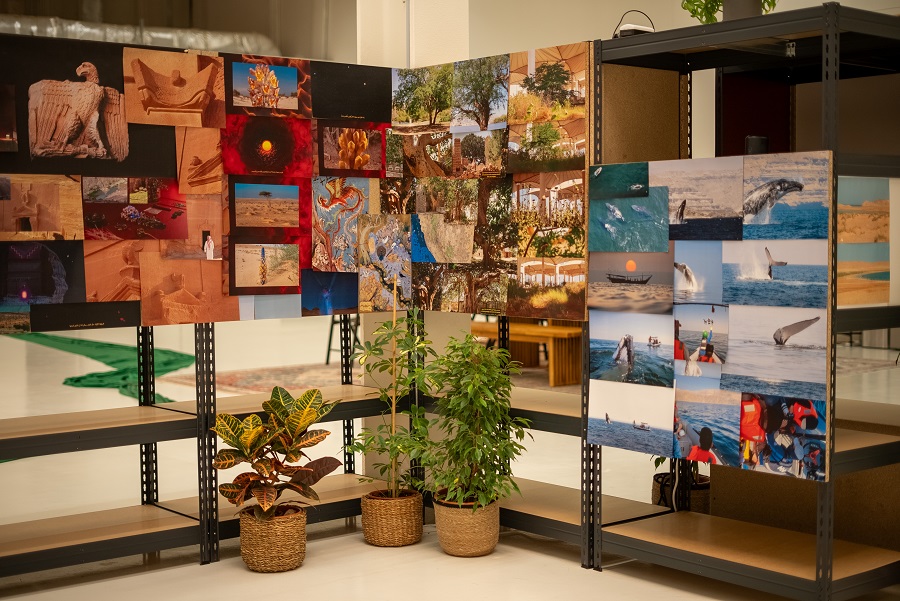
“The engineer is now also interested in how art can (be mixed with) engineering to make major public artworks for Neom in the future,” said Lynch, emphasizing that he hopes that in the same way as Neom has been able to showcase its architectural plans in exhibitions around the world, Neom’s culture sector hopes to be able to “replicate the artist in residence scheme in the next couple of years and have some of the work become part of a potential collection for buildings.”
Lynch said the residency had exceeded expectations for everyone involved.
“It was really important, I think, for the artists to understand the complexities of the 26,500 square kilometers of NEOM, and that it isn’t just about The Line as the dominant public manifestation of what has been going on,” said Lynch. “It was about their ability to travel around, look at the site, see what was happening, and to be able to respond to that. And hopefully we will hold onto those connections as we step forward.”







